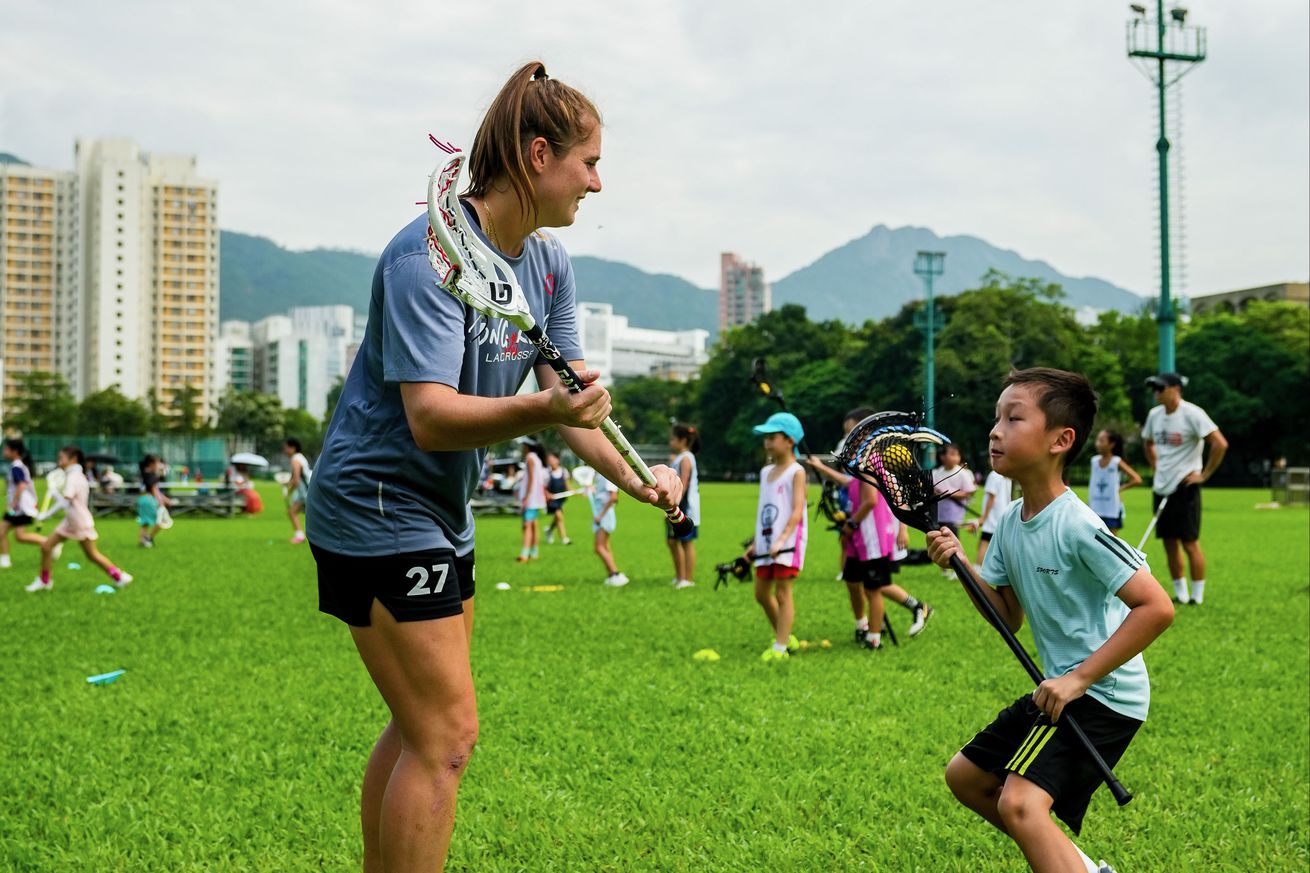
Staying involved in women’s lacrosse after college hasn’t been easy. However, former Wildcats make the most out of their opportunities to create a world where the NCAA isn’t the pinnacle of the sport.
If you walked through the streets of New York City at 5 a.m., you might find Kendall Halpern hitting lacrosse balls against the wall of a brick building.
Halpern was once an All-American defender at Northwestern, surrounded by the facilities and resources of an eight-time national championship-winning program. But now that she’s out of college, her insulated team workouts in Ryan Fieldhouse are replaced by solo outings in The City That Never Sleeps.
If she’s not by a brick wall, Halpern is usually at an outdoor park shooting and doing defensive agility drills, or she’s in the weight room focusing on cardio and strength training. And all of this happens before she goes to work her full-time job at Creative Artists Agency, where she works an entry-level position in its sports division.
“I love grinding in the morning,” Halpern said. “It actually is a great start to my day, and I think helps me be a little bit more successful at work, being alert, building relationships with people.”
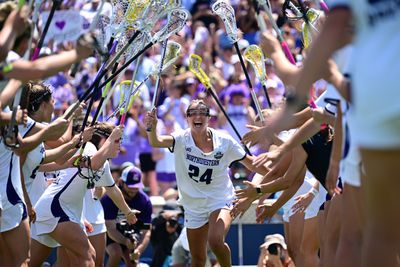
Photo by Grant Halverson/NCAA Photos via Getty Images
Halpern may be training by herself, but she’s not alone. She happens to be one of several Northwestern alumni involved in lacrosse beyond college — a group committed toward staying involved in a sport without a long-term professional league.
Similar to Halpern, Lauren Gilbert (Northwestern ‘22) balances lacrosse with a full-time job, working as an assistant manager within the athlete partnerships division at Athleta. Erin Coykendall (Northwestern ‘24) has broken into the coaching world as an assistant at Wellesley High School in Massachusetts while doing private sessions through her business, Erin Coykendall Lacrosse. Izzy Scane (Northwestern ‘24) and Megan Kinna (Northwestern ‘21) run lacrosse businesses full-time, travelling to different parts of North America for youth camps and clinics.
Even if their careers aren’t the most conventional, it’s something that all five players willingly took on. Motivated by opportunities like the newly-launched Women’s Lacrosse League (WLL) and Team USA events (and in Kinna’s case, Team Canada) in the lead-up to the 2028 Olympic Games, they hope their efforts can create a world where college lacrosse is not the end of the road.
“I felt like I had this opportunity to be a pioneer for the sport,” Gilbert said. “I get to really pave the way for the next generation of women, like the women who were the greats in college before me. They didn’t have this opportunity…they just had to retire. And that’s a really difficult thing to do when you’re in the peak of your athletic prowess.”
In 2021, Kinna thought she was done with lacrosse.
During her final season at Northwestern, Kinna endured mental health struggles that cut her college career short. She started working an office job in an elderly residential home, but soon realized that sitting at a desk for eight hours a day wasn’t for her.
“I definitely thought I lost lacrosse forever,” Kinna said. “I was like, ‘okay, my career is over,’ and I was in a really dark place.”
Around a year after Kinna originally quit lacrosse, one of her coaches convinced her to try out for Team Canada, which was participating in the Sixes lacrosse event at the 2022 World Games. That opportunity sparked her desire to play again, and she hasn’t looked back.
Now, lacrosse is Kinna’s full-time job. Residing just outside Vancouver, she spends her mornings either training CrossFit or doing lacrosse workouts inside the Pro Caliber Performance Center in Port Coquitlam, British Columbia. In the afternoons, she works with grade school-aged kids in practice sessions, which are arranged through Kinna’s Crew, her business. She also has amassed over 30,000 followers across Instagram and TikTok, where she posts reels about her career.
“Being able to actually live it and play the game that I love, be paid to play the game I love — Yeah, I may not be making as much money as I possibly could sitting at a desk, but it’s my life and it’s enjoyment,” Kinna said.
Halfway across the continent, by the shores of Lake Michigan, Scane had a similar vision for her professional career. Inspired by her master’s degree in management and the Name, Image and Likeness (NIL) opportunities she had in college, she started Izzy Scane Lacrosse. Aside from local clinics she runs for kids in the Chicago area, her weekdays are dedicated to individual training and administrative work for her business. Meanwhile, many of her weekends are spent doing clinics in other states, with an emphasis on non-traditional lacrosse areas.
With the majority of Scane’s friends working nine-to-five jobs on weekdays, her unconventional schedule sometimes felt disorienting.
“I feel like I almost have too much time on my hands to do what I want to do because I’m not working in that typical structure you’d picture for someone my age,” Scane said. “I definitely felt like I was twiddling my thumbs for the first bit while I was getting into my own type of schedule,”
“But I wouldn’t say that when it’s a Thursday night and I have to fly to a different state. Then, I feel like I’m overworked and it’s too much to do.”
At Northwestern, players practice as a team under the guidance of Kelly Amonte Hiller’s coaching staff. Professionals do congregate — for example, Halpern will occasionally practice with fellow WLL players in New York, while Gilbert sometimes trains with her sister while living in the San Francisco area. For the most part, though, postgrad training is done alone, with most training tailored to game fundamentals.
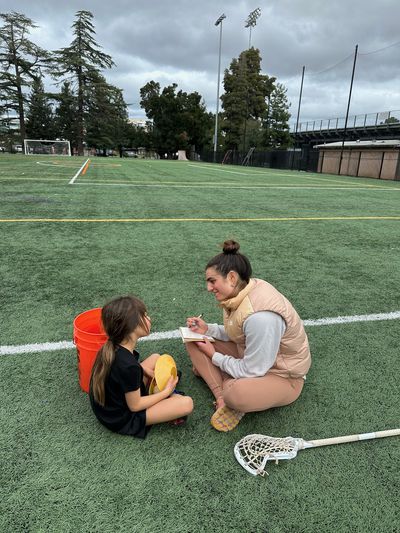
via Lauren Gilbert
Solo training also means not receiving feedback constantly. After competing at a Final Four level in college, it can be easy to plateau, especially as one ages. Players are aware of that concern and learn to get creative as a result.
“It’s something that I have struggled with mentally,” Gilbert said of trying to improve. “[I was] making it kind of obsessive with how much time I felt like I needed to spend to get better…It’s definitely difficult. I feel like I could be spending so much more time than I am if I had a proper facility, proper coach and proper team.”
Halpern and Gilbert utilize their lifting and workout plans from Northwestern. Scane stays in touch with her NU trainers. Coykendall works with a trainer at Stadium Performance in Dedham, where she also practices lacrosse. Renowned for her on-field IQ, Coykendall also tries to take things from others’ games and implement them into her own. For example, while watching Albany men’s lacrosse face Cornell in the first round of this year’s NCAA tournament, she was inspired by an Albany attacker’s backhanded shot.
Coykendall also draws from her experiences coaching high school. With a bird’s-eye view of an entire field, she has the time to read and make decisions about different game scenarios in a way that she cannot when she’s playing.
“It just gives you a different perspective of what you need to do and how you need to view things,” Coykendall said of coaching. “It helps you as a leader on the field, communicating with teammates and understanding why one person might not make the same read on the field as another person.”
Repetitive efforts to improve do come to fruition. Kinna thinks she’s more creative, faster and better at techniques like the toe-drag dodge (pulling one’s stick toward their body to maneuver around a defender) than she was in college. Scane has found benefits in focusing on her own game rather than working in a system. Halpern embraces the challenge of independence.
Despite not having the same support as their college days, good things still come out of freedom.
“I’ve always been a self-sufficient person,” Halpern said. “I love to just go on my own path, and so I don’t need someone to tell me what to do. I can kind of figure it out.”
Women’s professional lacrosse has been a trial-and-error run so far. The Women’s Professional Lacrosse League ran from 2017 to 2020 but shut down during the COVID-19 pandemic. Then came Athletes Unlimited, a league where players switched teams weekly and competed against each other individually in the summer. That league (which Scane, Coykendall, Halpern, Gilbert and Kinna all played in) ran from 2021 to 2024, but was suspended indefinitely in December 2024 due to potential conflicts with international competitions.
Gilbert, a former player and a member of the Player Executive Committee at Athletes Unlimited, felt that the league’s structure had shortcomings. Although she enjoyed her time playing for AU, she found the Sparks, Maryland location and six-week duration of the league to be isolating, especially since she had to juggle it with her job.
In addition, Gilbert felt the weekly team changes not only prevented players from forming relationships but also made the league difficult to market.
“The format was really designed for softball. It was kind of this fantasy concept that was not conducive to the highest level of lacrosse,” Gilbert said of AU. “Going through all that confusion as a player was hard and led to not the best product on the field.”
The newest iteration of the pro game is the Women’s Lacrosse League (WLL), founded by the men’s Premier Lacrosse League. Despite holding one event so far — a week-long Sixes championships series with four teams this February — players are confident that the third time is the charm for finding a sustainable league.
Breaking: The PLL is officially launching the Women’s Lacrosse League (via @GetUpESPN)@wlacrosseleague | @PremierLacrosse pic.twitter.com/XeyDxohOif
— ESPN (@espn) November 13, 2024
The 2025 WLL Championship Series was in Springfield, Virginia, an area that Gilbert thought was more accessible than Sparks. Since the series was only a 10-day commitment, it wasn’t a significant disruption to players’ everyday lives, mirroring the PLL’s format of playing games in different cities on weekends. With the event overlapping with the PLL championship series, there was greater attendance — the weekend session was a sellout and the largest crowd Gilbert played in front of since college.
“The WLL does a really good job of creating excitement around the sport, making sure it’s legitimate for the players and for the fans watching and not just throwing out a product without really meticulously thinking about it,” said Scane, the captain of the New York Charging and one of the four founding WLL ambassadors.
The WLL also stood out for giving athletes a voice. As an ambassador, Scane was involved in planning the league’s format, event planning and player compensation. The league sent out post-event surveys to players after the championship series, part of why Gilbert felt it had an “open door policy.”
Coming off previous league failures, the WLL was slow with its rollout, almost treating the championship series as a trial run for its future. However, metrics and feedback from the event were overwhelmingly positive, an early sign that the league could be one for the long run.
Gilbert, Coykendall and Halpern all played alongside Scane for the WLL’s Charging. Despite the championship series’ positive environment, playing Sixes was still an adjustment. The game is faster-paced with a 30-second shot clock (compared to 90 in college), and only six players are on the field at once versus the traditional 11 v. 11 format of college lacrosse. Because of this, players usually restricted to one position in college had to learn how to play out of it.
Halpern was the only defender on the Charging’s roster, so she called the shots before their first game to determine which players would fit best in their defensive scheme. She also had to teach her teammates defense — for example, she helped Scane learn how to foul less often. Halpern herself was then scoring on the attack off Scane’s assists. Meanwhile, Coykendall, who was known for being Northwestern’s primary feeder in college, learned how to play with more urgency and aggression.
Defensive POWERHOUSE Kendall Halpern scoring the first goal of the game?
THAT’LL DO. pic.twitter.com/bgYbvofxwg
— New York Charging (@wllcharging) February 15, 2025
“Especially in Sixes everyone has to be a threat,” Coykendall said. “And those windows are going to close quick. If you catch [a pass] in that window and you’re not shooting, it’s kind of a disservice to your team.”
Sixes have gotten mixed reactions from the lacrosse community due to the format’s novelty. But Coykendall and Gilbert believe its pace and lack of stoppages compared to the women’s field game make it more appealing to the casual fan.
That said, sixes will be lacrosse’s format in the upcoming Olympics and several international competitions leading up to it. Like it or not, it is the future the sport must embrace.
Women’s pro lacrosse adjustments don’t just come with learning new formats of play. With their plans revolving around exclusive pro and international events that don’t operate on a fixed schedule, players continue their careers in a perpetual state of not knowing what’s next.
“The uncertainty of not being invited to something or not playing at your best at an event is a little scary, because your career could just end there,” Halpern said.
Uncertainty becomes a bigger issue for players who do lacrosse full-time. For Coykendall, part of solving that issue was accepting that she didn’t have to be doing something at every given moment. Free time also opened the door for players to learn more about themselves beyond their sport.
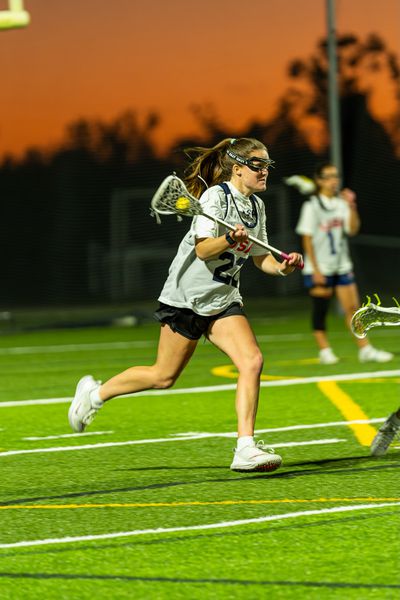
USA Lacrosse
Coykendall, an avid animal lover, got two new dogs since graduating — Tractor and Lunch Lady. Scane, who said she previously didn’t have hobbies outside of lacrosse, took up golf and cooking. She’s also grappling with time management, which has been an ongoing learning process for her over the last year.
“A lot of people, especially college athletes, come out like ‘Oh, who am I now if I’m not someone who’s going in 20 hours a week training for sport?’ and that’s your whole identity,” Scane said. “So I do think it’s been interesting figuring out day to day, what do I enjoy doing? What’s going to be important to me? What are my long-term goals outside of a sport and more just as a human being — what do I want to be doing five years from now?”
Navigating lacrosse limbo can be isolating, but it’s comforting for players to know Northwestern will always be a part of them. Whether it be at events or outside them, Lake Show alumni can bond over shared experiences and trade advice. For instance, Coykendall convinced Scane to make a Cameo account to address the large number of requests that the two-time Tewaaraton Award winner receives for personal videos.
However, the primary motivation has always been to grow the sport. It’s already reflected in the next generation, as seen in the U15 Canada West team that Kinna coaches — when the team wrote down their future goals, she noticed that half the squad wanted to play at the Olympics, while the other half wanted to go pro. Meanwhile, the game is expanding internationally, as evidenced by the Japanese national team going neck-and-neck against a group of WLL pros in the first half of a March exhibition match.
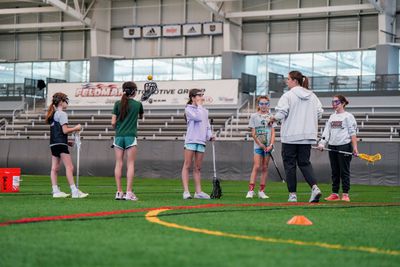
Jack Sullivan
Ultimately, these Northwestern alumni make sacrifices knowing that they are on the right side of history. With women’s lacrosse just three years away from receiving the largest spotlight it has ever gotten, the groundwork must be laid for opportunities in the sport beyond the NCAA. And for that reason, diving into the unknown is all worth it.
“I like what I’m doing. I think it’s very rewarding in the way of growing lacrosse as much as possible, getting to work with kids that are really excited about the game,” Scane said. “At the end of the day, I love playing lacrosse. It’s not something I want to stop doing anytime soon.”
